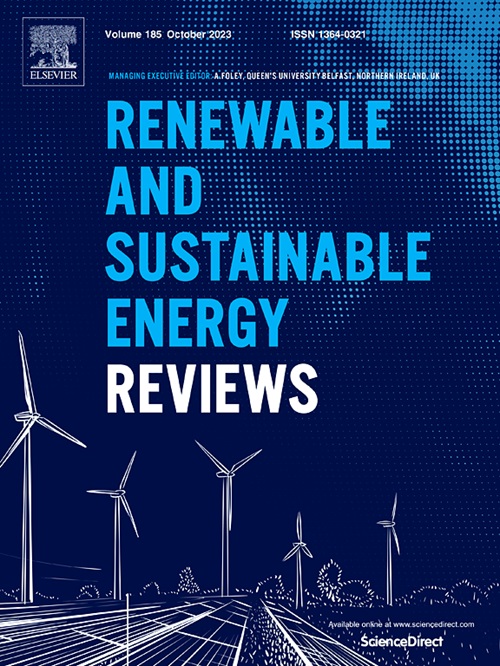Combining dust scaling behaviors of PV panels and water cleaning methods
IF 16.3
1区 工程技术
Q1 ENERGY & FUELS
引用次数: 0
Abstract
Dust scaling on photovoltaic (PV) panels can significantly decrease power generation efficiency and potentially trigger fire hazards through hot spots. Therefore, understanding the formation process of scale and reasonable cleaning methods is crucial for its practical application and maintenance. This study systematically reviewed the dust scaling process and various water-based cleaning methods to optimize maintenance strategies for enhanced efficiency and safety in PV systems. Soluble and hygroscopic mineral particles absorb dew, forming extensive scale through capillary action. Biological and industrial dusts promote the formation of hard scales. Typical scale formations include approximate laminar, localized accumulation, island-like, and gully laminar scales. Based on weekly PV efficiency declines attributed to dust accumulation, Asia is the most severe (7.84 %), followed by Africa (3.03 %), Oceania (2.40 %), South America (1.90 %), North America (1.32 %) and Europe (1.21 %). In different climatic conditions, the western part of Asia, the Gulf region, and northern Africa exhibit the most significant potential for scale accumulation. Pressurized water cleaning improves power generation efficiency by an average of 10.4 %, and the average water usage is 2.1 L/m2, with a water recovery rate of 55–80 %. Optimal cleaning frequencies were determined to be seven days for 37 % of cases and 7–30 days for 44 %. It is recommended that areas most affected by dust be cleaned weekly and at least monthly for other areas susceptible to dust. This study provides practical guidance for PV maintenance, supporting the global expansion of clean energy through improved efficiency and safety.

求助全文
约1分钟内获得全文
求助全文
来源期刊

Renewable and Sustainable Energy Reviews
工程技术-能源与燃料
CiteScore
31.20
自引率
5.70%
发文量
1055
审稿时长
62 days
期刊介绍:
The mission of Renewable and Sustainable Energy Reviews is to disseminate the most compelling and pertinent critical insights in renewable and sustainable energy, fostering collaboration among the research community, private sector, and policy and decision makers. The journal aims to exchange challenges, solutions, innovative concepts, and technologies, contributing to sustainable development, the transition to a low-carbon future, and the attainment of emissions targets outlined by the United Nations Framework Convention on Climate Change.
Renewable and Sustainable Energy Reviews publishes a diverse range of content, including review papers, original research, case studies, and analyses of new technologies, all featuring a substantial review component such as critique, comparison, or analysis. Introducing a distinctive paper type, Expert Insights, the journal presents commissioned mini-reviews authored by field leaders, addressing topics of significant interest. Case studies undergo consideration only if they showcase the work's applicability to other regions or contribute valuable insights to the broader field of renewable and sustainable energy. Notably, a bibliographic or literature review lacking critical analysis is deemed unsuitable for publication.
 求助内容:
求助内容: 应助结果提醒方式:
应助结果提醒方式:


